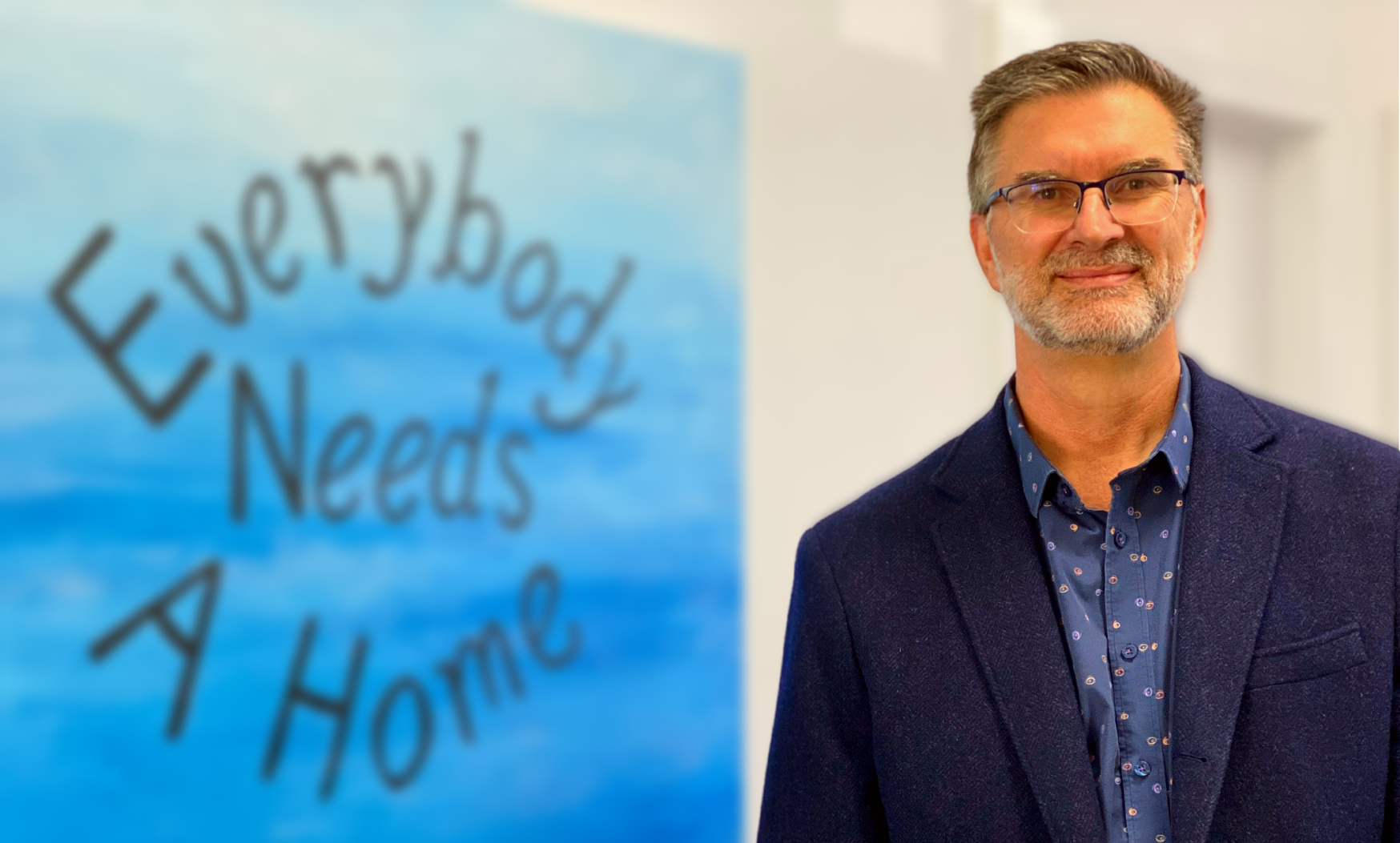
Vulnerable priced out of housing
About ac.care’s homelessness services
Snapshot Methodology
Findings in detail
Policy Implications
Vulnerable priced out of housing
Vulnerable priced out of housing
A STUDY of properties available in southern country South Australia has found the private rental market is failing people on low incomes.
“Some people may have shelter or accommodation, but for many of the people on our nation’s lowest incomes there is sadly very little on the market in the Murraylands, Riverland and Limestone Coast that could be a place to call home,” ac.care chief executive officer Shane Maddocks said.
The country specialist homelessness agency founded in Mount Gambier has shared regional data in collaboration with Anglicare Australia’s national Rental Affordability Snapshot release today.
On the snapshot weekend of 19 March 2022, 55 private rentals were advertised for rent across the Limestone Coast, Riverland and Murraylands, with ac.care analysing whether each property is affordable and suitable for 14 types of households on low incomes.
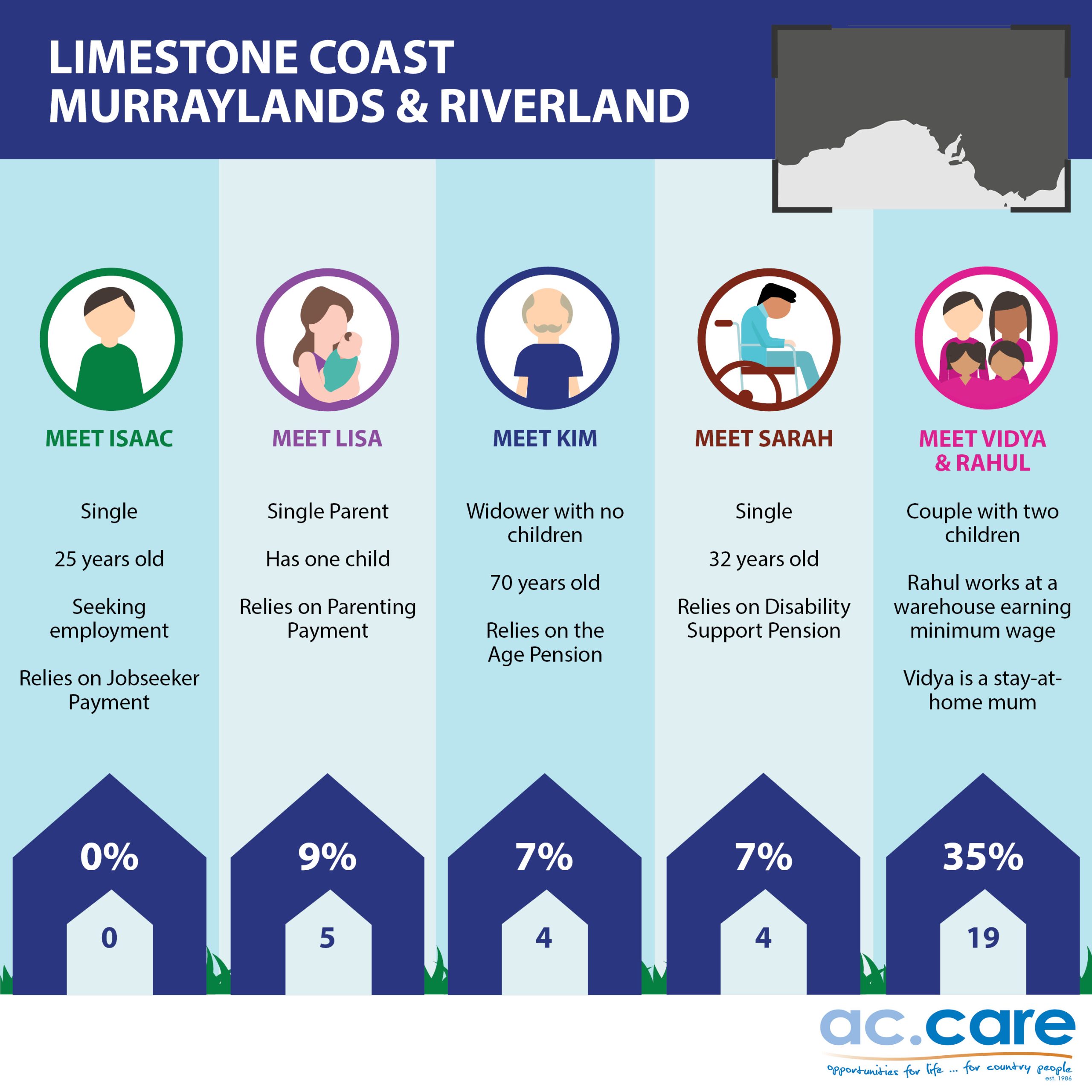
“The key to making housing more affordable lies in two factors – making sure everyone has a decent income and providing enough affordable rentals for the people who need them,” Mr Maddocks said.
“It is clear we must invest in affordable housing and the shortfall of affordable rentals in our regions must be tackled.”
ac.care is calling for major parties to commit to an increase to the rate of JobSeeker and other payments in the lead-up to the federal election.
“This will help people on the lowest incomes find a secure home,” Mr Maddocks said.
ac.care has also joined the sector-wide campaign calling for more support to renters and development of a sustainable plan to tackle homelessness.
“Nobody should be forced to make impossible sacrifices just to keep a roof over their head,” Mr Maddocks said.
“It’s time to take real action and make sure that everyone can have place to call home.”
The study showed that in the Limestone Coast, Riverland and Murraylands, as is the case across Australia, renters on low incomes are being priced out of the rental market.
People on income support, especially those who are out of work, have few options, with no rentals, including sharehouses, affordable for a single person on the JobSeeker payment.
“The shortage of affordable rentals will condemn people to make difficult decisions to keep a roof over their head,” Mr Maddocks said.
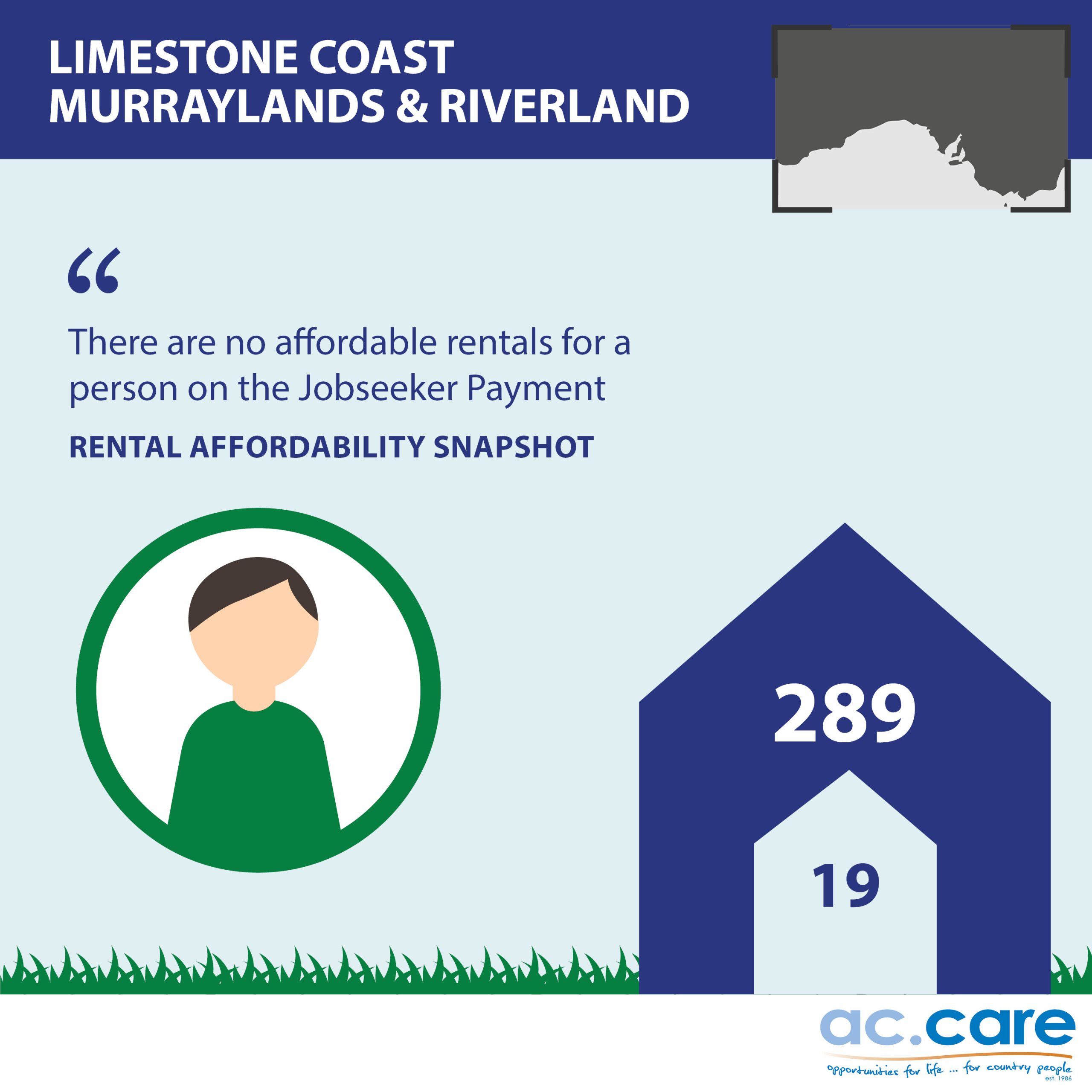
Families out of work are also facing a dire situation.
An out-of-work couple with two children could afford only 15pc of rentals, but competed with people on higher incomes for these scarce properties.
Single parents out of work face even tougher odds, with affordability at just five percent.
“This helps explain why the rate of JobSeeker is such a critical factor in child poverty – one in six Australian children now lives in povertyii, with those growing up in households that depend on JobSeeker at much greater risk,” Mr Maddocks said.
The snapshot data also shows how tough the regional rental market is for young people.
A person on Youth Allowance looking for a sharehouse cannot afford any of the available rentals in the southern country South Australia regions.
“Youth Allowance is the lowest of all government payments and year after year we find young people are at the bottom of the affordability ladder,” Mr Maddocks said.
Meanwhile, people with disabilities faced unique challenges in the market, with individuals receiving the Disability Support Pension only able to afford seven per cent of rentals.
“Some will find that the rentals listed in our snapshot do not meet their needs and for many people the Disability Support Pension is too low to allow them to rent a home that does,” Mr Maddocks said.
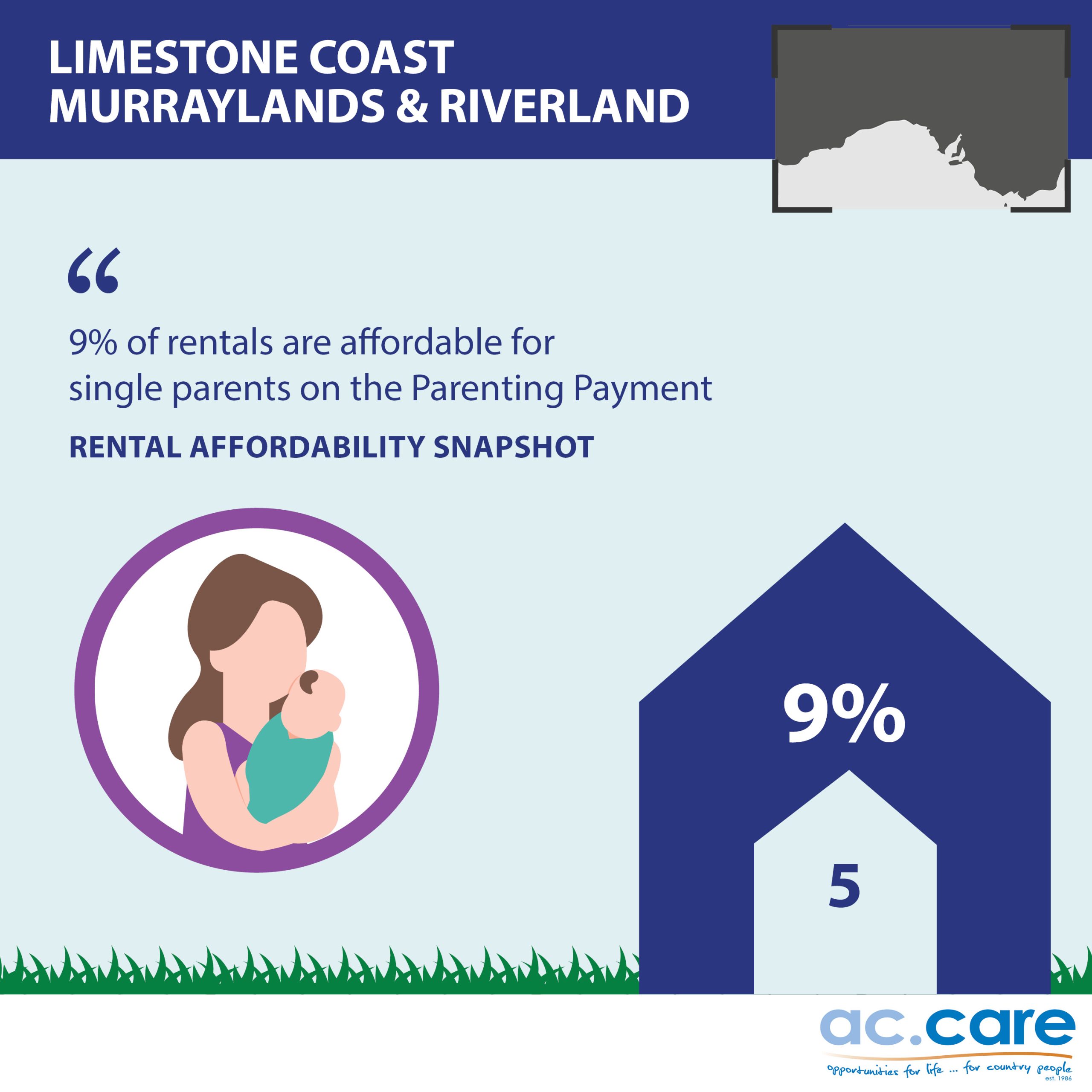
A couple living on the age pension could only afford 20pc of rentals, while single retirees had it even worse, with seven percent of listings left to compete for.
Working people are hardly better off.
A single person working full-time on the minimum wage will find only 13pc of rentals are affordable. Of all the households featured in the latest snapshot, families with two parents in full-time work had the best chance of finding an affordable home, but even they were priced out of 40pc of rentals surveyed.
But Mr Maddocks said the rental affordability snapshot did not tell the whole story.
“Although we assessed properties based on the full-time minimum wage, we know more and more people are working casually,” Mr Maddocks said.
“Their plight is likely to be much worse than this snapshot shows.”
He said the snapshot also did not take into account competition for each of the properties with dozens of applications commonly being submitted for affordable rentals in the regions and the most vulnerable left demoralised by constant knockbacks from housing applications.
“All of this is a wake-up call,” Mr Maddocks said.
“The latest data and what our frontline workers are seeing at our homelessness services across southern country South Australia is affordable homes are simply not available for people on low incomes – it is past time for action to make housing more affordable as a national priority.”
Struggling? ac.care can help:
ac.care Financial Counselling provides a free and independent financial counselling service
ac.care is a Specialist Homelessness Service provider supporting people who are homeless or at imminent risk of homelessness.
About ac.care’s homelessness services
About ac.care’s homelessness services
ac.care is the Country South SA Homelessness Alliance lead agency, providing homeless services to clients across the Limestone Coast, Murraylands and Riverland.
This alliance involves working in partnership with the South Australian Housing Authority and Junction, along with Pangula Mannamurna Aboriginal Corporation and Moorundi Aboriginal Community Controlled Health Service with a focus on improving support and access to services for Aboriginal people in country South Australia.
ac.care is a country specialist working with people of all backgrounds on low incomes who often face challenges accessing affordable and appropriate housing, limited employment opportunities, social exclusion and isolation.
ac.care’s homelessness services work closely with clients and real estate agents to ensure quality outcomes for those who are able to access private rental properties and assist others to access SA Housing Authority and community housing properties.
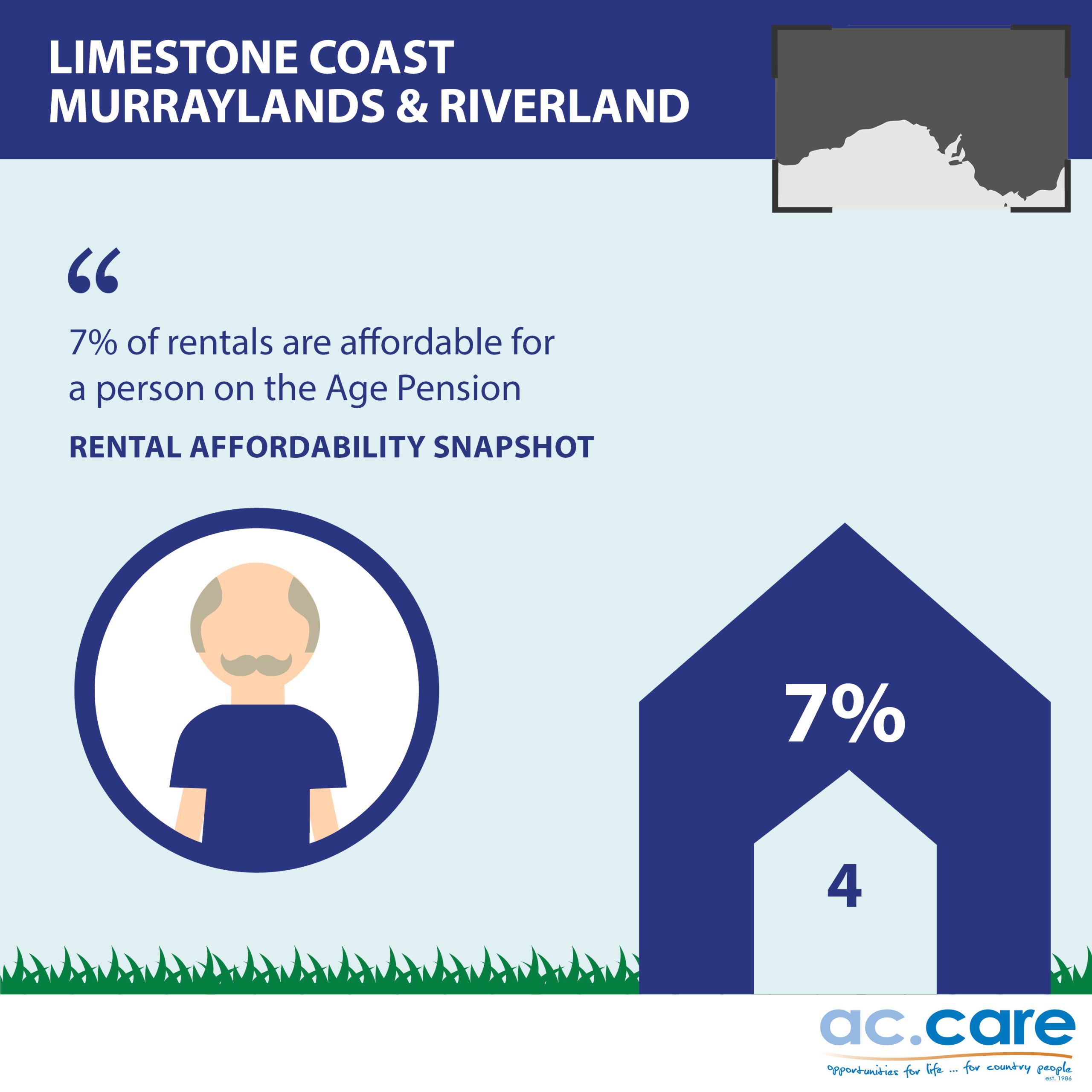
The homeless services also provides early Intervention and prevention strategies to assist those facing eviction to maintain and sustain their tenancy and supported transitional housing to provide case management to address the issues which caused the initial homelessness.
New and innovative programs are required in regional areas in collaboration with other agencies, business and other stakeholders to ensure available resources are used to achieve the best possible outcomes for clients.
ac.care is already leading a range of innovations to make a difference, including:
• Collaboration with employers, real estate agents and financial counsellors to deliver the Tenancy Education Program (TED) to assist clients to obtain and sustain a tenancy and provide contacts within the community to pursue employment and social inclusion.
• Collaboration with education and other youth services via a vulnerable youth framework to provide transitional housing to young people while enabling them to remain engaged in education, training or employment.
• Collaborating with the business community to provide opportunities for those who are disadvantaged.
• Engaging with the Vulnerable Persons Framework to provide rapid housing for rough sleepers and support them to sustain their tenancy.
• Providing access to services through local Aboriginal Controlled Health Organisations and schools.
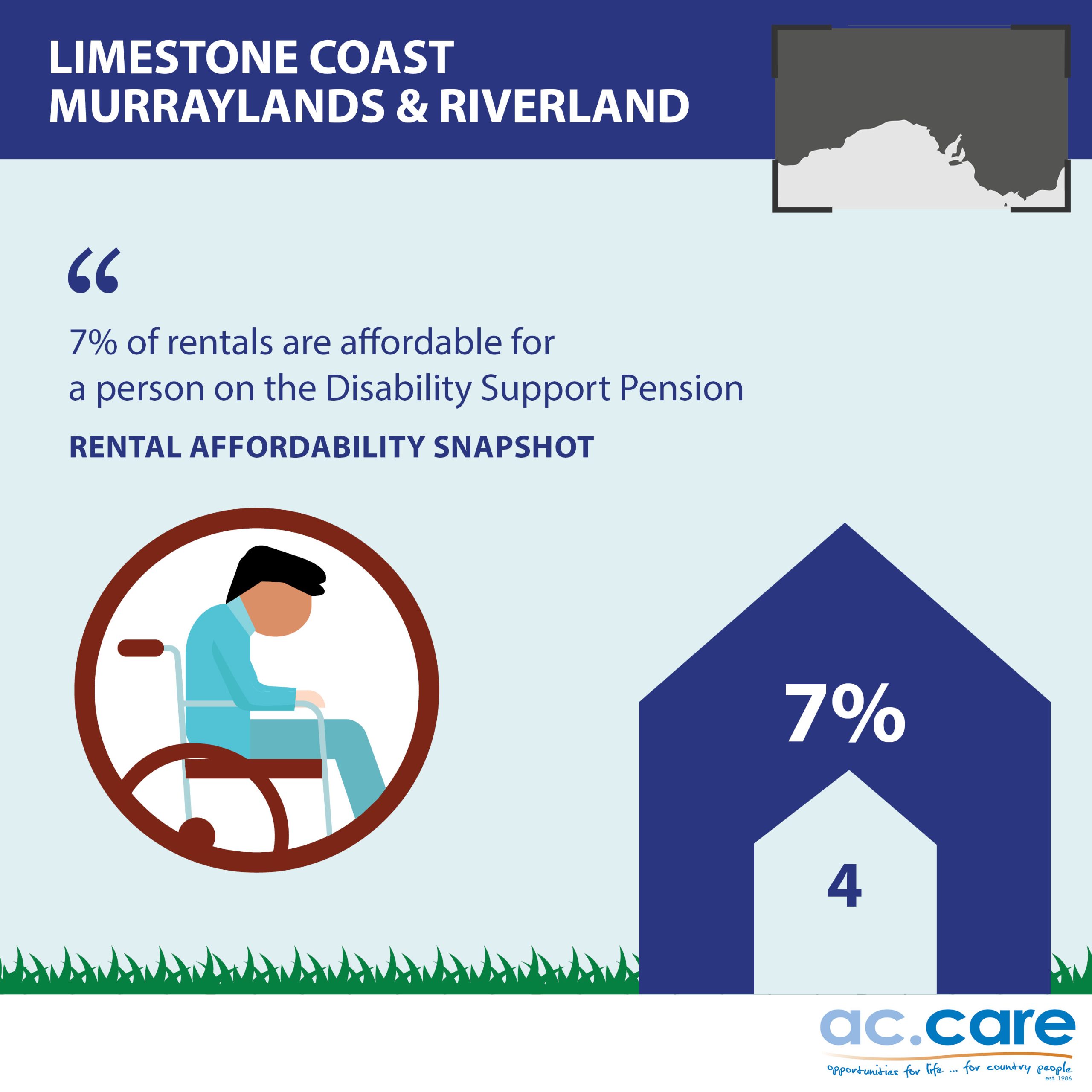
Snapshot Methodology
Snapshot Methodology
Every year ac.care contributes to Anglicare Australia’s national Rental Affordability Snapshot, testing whether it is possible for people on low incomes to rent a home in the private market. We do this by taking a snapshot of the properties listed for rent on realestate.com.au on one weekend in March. We then assess whether each property is affordable and suitable for 14 types of households on low incomes.
Those households are:
• single people receiving the Disability Support Pension, Youth Allowance, JobSeeker and the Age Pension, or earning minimum wage
• single parents receiving the Parenting Payment or earning the minimum wage
• couples without children on the Age Pension, and
• couples with children on JobSeeker, Parenting Payment, earning the minimum wage, or a combination of these income sources.
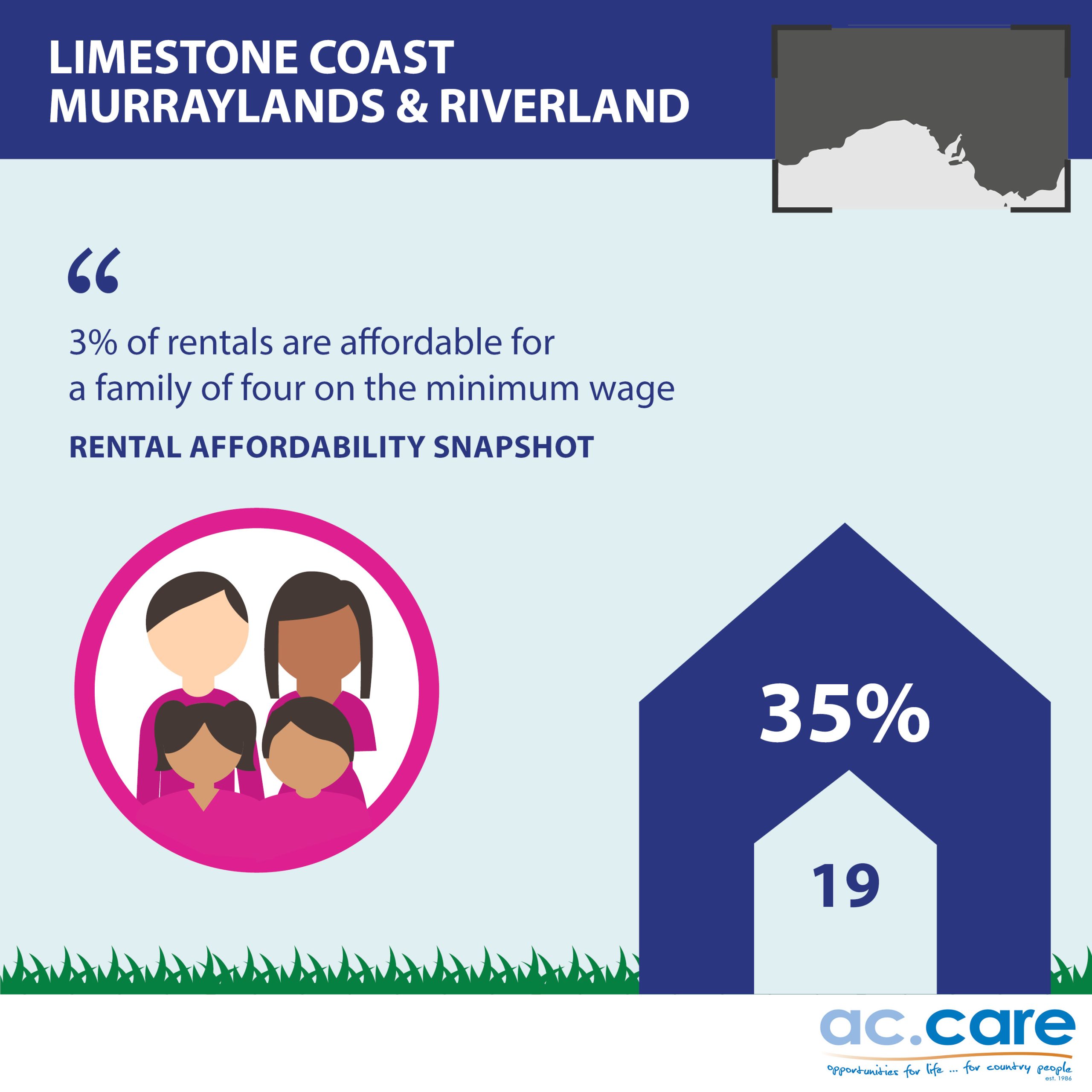
To test whether a listing is affordable, we calculate the income for our household types using government data. We use these figures to calculate the maximum affordable rent for each household type and compare that against listed properties that are suitable for each household type. The Snapshot follows the internationally accepted benchmark that rent needs to be no more than 30pc of a household budget to be affordable for people on low incomes.
Findings in detail
Findings in detail
On the Snapshot weekend of 19 March 2022, 55 private rentals were advertised for rent across the Limestone Coast, Riverland and Murraylands. While a property could be affordable and appropriate for more than one household type, any individual property can only be rented out by one household type at any time.
To this end, we found:
• 15 (27pc) individual properties were suitable for at least one household type living on income support payments without placing them in housing stress.
• 38 (69pc) individual properties were suitable for at least one household type living on minimum wage without placing them in housing stress.
On the Snapshot weekend, these are the numbers of unique properties affordable and appropriate for:

Table 1: Rental Affordability Limestone Coast, Riverland, Murraylands by household type and percentage
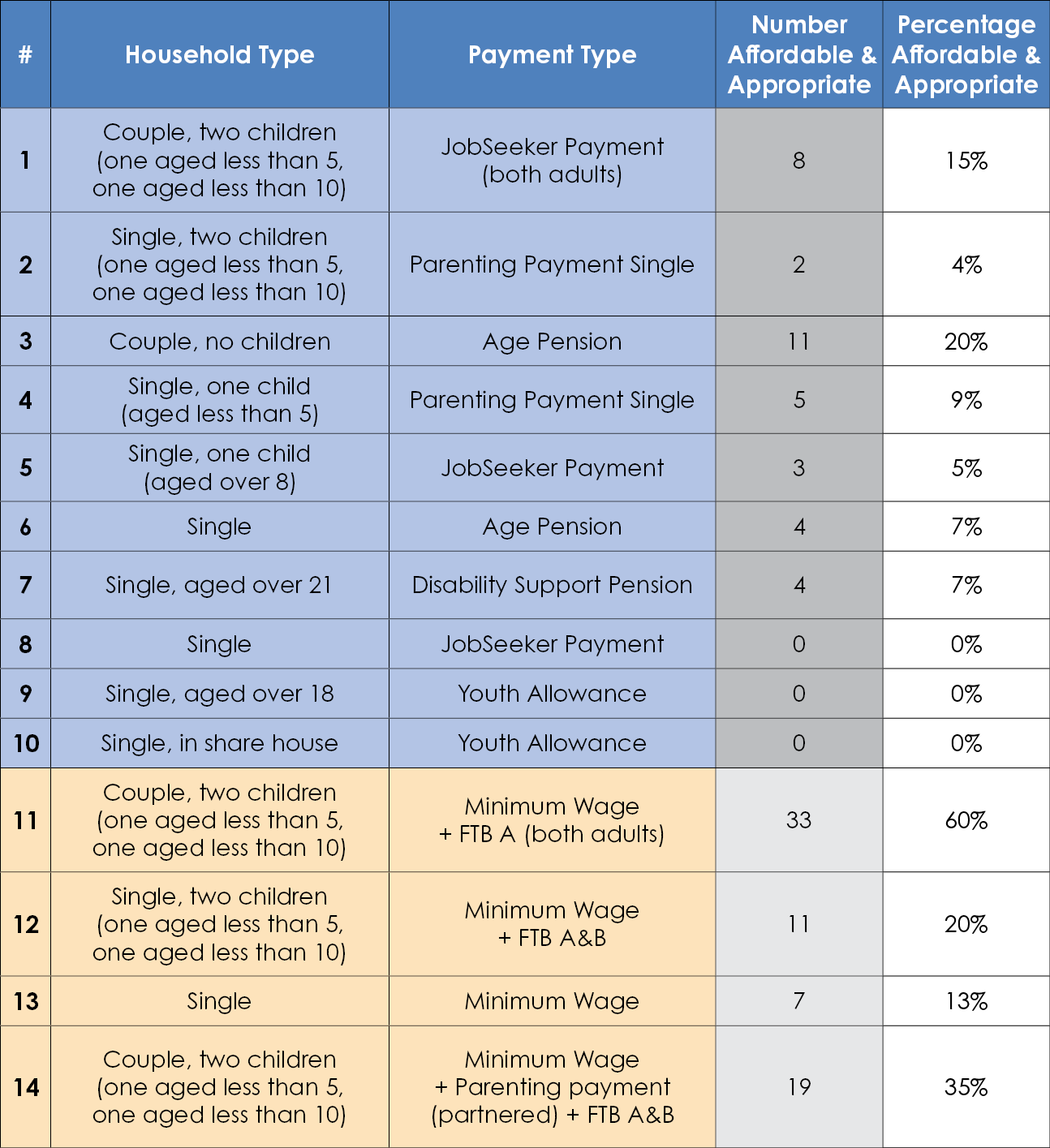
Total number of properties: 55
Policy Implications
Policy Implications
Raising JobSeeker and related payments over the poverty line
Across the Limestone Coast, Riverland and Murraylands, people out of work depend on JobSeeker and other payments to get by. Many are likely to be renting, yet this snapshot shows that the payment is so low it is trapping people in poverty and housing stress.
Raising the rate of JobSeeker and related payments above the poverty line will give badly needed relief to the people on the lowest incomes. It will allow them to afford the essentials they need to live their lives and plan for their futures. Most importantly, it will give more people the benefits of a secure home.
More affordable rental homes for Limestone Coast, Riverland and Murraylands
We are facing a major shortfall of affordable homes. The Australian Housing and Urban Research Institute has shown we have a shortfall of 33,400 social and affordable rentals across South Australia. By 2036, that number is expected to grow to 49,900.
With the private rental market failing so many people, we must invest in homes for those people who need them most. Ending our affordable housing shortfall would be the most powerful way to tackle the rental crisis – and boost our regional economy. The federal and state governments must work together to end this shortfall.
More support for renters
Commonwealth Rent Assistance is meant to help people on low incomes to afford their rent. But it has failed to keep pace with the cost of renting, which has been skyrocketing.
It means that people on low and middle incomes are paying so much in rent they can’t meet basic costs like decent food and medical expenses. And for people on some government income payments, like Youth Allowance and JobSeeker, it doesn’t kick in until their rent is already causing serious financial stress.
We need to reform and increase Commonwealth Rent Assistance so that it works for people struggling to pay the rent. That will give people in housing stress more to spend on food, their health and getting on with life in their local community.
A plan to end homelessness
The number of people experiencing homelessness is growing every year because of the shortage of affordable housing. This lack of access to affordable housing is a major concern for older people, who are facing the risk of homelessness at record-high rates at a time in their lives when they need stability more than ever.
People who are homeless need safe secure homes to help them get back on their feet. Being stuck indefinitely in temporary emergency accommodation is not the answer.
We need a plan to end homelessness that tackles the causes of homelessness, including the lack of affordable housing, poverty and family violence. We also need funding and support to rehouse people who are homeless, helping them keep a roof over their head.



